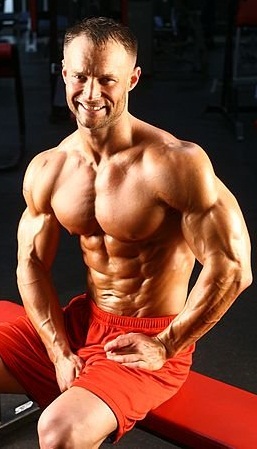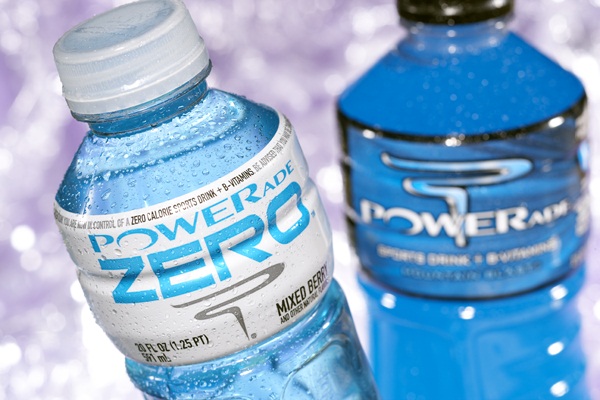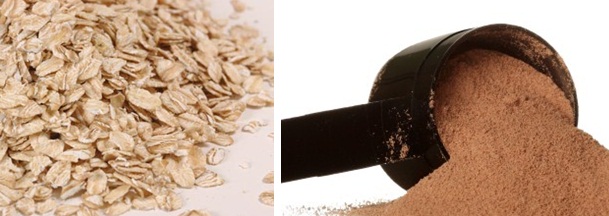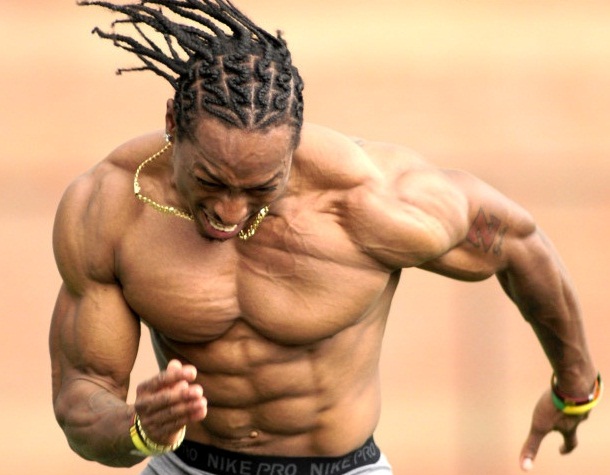Nearly everyone who reads Simplyshredded wants to learn how to get bigger, which should leave little question as to why our articles are packed full of tips and guidelines on how to do just that. In fact, we look upon it as our obligation and responsibility to help each aspiring bodybuilder to add reams of fat-free mass to his frame.
Thus, we would be remiss in our duty if we did not tackle a very common issue faced by those seeking major gains the unintended addition of bodyfat along with muscle. From a nutrition perspective, getting big is often boiled down to “eating big,” a philosophy iron hoisters have lived by for years. In reality, for many bodybuilders, big eating, which implies packing away plenty of food, can be an equally effective fat-gaining plan.
Bulk Without The Bulge
Therein lies one of the biggest dilemmas facing a bodybuilder: how to gain mass without getting downright sloppy looking. Avoid the following 10 missteps and you, too, can bulk without the bulge.
Mistake #1 Eating To Much At Each Meal
This error is all about portions. When you eat a lot in hopes of gaining mass, your body can make use of only a certain amount of nutrition including calories at one sitting. What happens to the excess? It’s converted to bodyfat. That’s why I’m in favor of eating five to eight “meals” a day. A meal could be as small as a protein shake, a small turkey burger on a whole-grain bun or a chicken breast with a heaping cup of cooked pasta.
Eating frequent meals of smaller portions of food promotes protein synthesis and prevents an upgrade in fat-storing enzymes and hormones.
Mistake #2 Ingesting An Extreme Number Of Calories
Do you really need 6,000 calories each day in order to build mass? Is 5,000 appropriate? What about 4,000? No, no and maybe. For many bodybuilders, building mass requires 17-20 calories per pound of bodyweight, depending on metabolic rate and daily activity level. For a 200-pounder, that comes out to 3,400-4,000 calories a day. For those with a mediocre metabolism, the total should be a little less. In other words, if your metabolism isn’t on par with that of Darrem Charles and you’re eating 5,000 calories a day, you’re going to get extremely fat. Start with 16 or 17 calories per pound of bodyweight and check a mirror after a week or two. If you’re gaining in your midsection, your calories may be too high.
If you’re adding bodyweight and still looking decent around the middle, bump up your calorie intake a bit and experiment with incremental increases until you come across a level that works best for you.
Mistake #3 Not Knowing The Most Important Meal Times
To support muscle growth without adding bodyfat exaggerate the size of the two important meals: breakfast and the postworkout meal. Take in more carbs and more protein; a little fat is OK, too. These are the two most important meals of the day, and they determine whether you will gain mass for the day or simply move sideways.
When you eat a lot for breakfast, the first meal of the day, you boost anabolic (muscle-building) hormones, which in turn suppress catabolic hormones that try to break down muscle tissue. After training, muscles act like a vacuum, sucking up nearly all incoming nutrition that causes muscle growth while impeding the body’s ability to store bodyfat. The opposite not eating enough at breakfast and after training can compromise recovery, which can downgrade your metabolic rate. Do you know what happens when your metabolic rate is downgraded? It’s easier to get fat.
Mistake #4 Not Consuming Enough Carbs
Protein is the most important nutrient for muscle growth, but carbs also play a critical role, especially after training. You won’t be able to get enough calories when attempting to put on mass if your carb intake is low; when mass is your aim, take in 2-3 grams (g) of carbs per pound of bodyweight daily. Carbs help blunt cortisol levels cortisol can interfere with testosterone’s anabolic actions in muscle and lead to muscle breakdown, especially immediately following a workout. A mass seeker’s postworkout meal should include 40 g of fast-digesting protein, such as whey, and 80-100 g of fast-digesting carbs, such as white bread, Powerade, baked potatoes, sugar, honey and fruit.
Carbs at this time spike the anabolic hormone insulin, which helps to drive glucose, amino acids and supplements such as creatine into muscle cells, spurring muscle protein synthesis.
Mistake #5 Relying On “Diet” Foods
To get ripped to the bone, you need turkey breasts, chicken breasts, fish and egg whites. Those are the protein sources with the fewest calories. You also need a lot of veggies to curb your appetite. The problem for many misguided mass seekers is that they eat diet foods during a mass-gaining phase in hopes of maintaining low levels of bodyfat. What really happens? They often fail to add any significant amount of muscle mass. Why? Testosterone. Eating minimal fat (as from the aforementioned lean protein choices) can cause a drop in testosterone levels. Surprisingly, high-fiber veggies can actually interfere with testosterone metabolism as well, which leads to “so-so” rather than “wow!” gains. Ditch the diet proteins for lean beef and whole eggs mixed with egg whites (eat half whole eggs and half egg whites if you eat six eggs at breakfast, toss out three of the yolks).
Don’t be afraid to include low-fat yogurt, milk, cheese and cottage cheese in your diet. Your recovery ability, growth and results will be happy you did.
Mistake #6 Avoiding Important Aminos
There are three amino acids that are more important than others. Branched-chain amino acids (BCAAs) help prevent muscles from falling into a dreaded breakdown state that accompanies hard training. By taking BCAAs before and after training, you protect muscles from being catabolized, torn apart and burned. This indirectly promotes growth. Of the three BCAAs, leucine appears to be the most important. It not only stimulates the anabolic hormone insulin, which acts as a catalyst for muscle growth, but it directly turns on messengers in muscle cells that promote growth.
Try a combo of 5-10 g of BCAAs before and after training, or simply take 5-8 g of leucine before and after training.
Mistake #7 Skimping On Vital Recovery Time
Hardcore training requires knowing how to eat properly. One of the biggest mistakes bodybuilders make is believing that even the best nutrition plan can override the need for proper rest. Rest allows catabolic hormones to recede. Although good nutrition also suppresses catabolic hormones, there’s a limit to its effectiveness. From there, it’s all about rest. If you steer clear of the gaffes I have outlined and still fail to add quality beef, you need more rest days. Instead of triggering your body to grow, you are hammering it too hard, and not even the ideal nutrition scenario can save you.
Take a closer look at your training schedule and add another rest day or two to your current regimen.
Mistake #8 Not Eating Before Working Out
Researchers have found that it is crucial to provide the body with protein and carbs in a preworkout meal. The nutrients will be used directly as energy, saving your muscles from drawing on their own stores for fuel, and they will induce the activation of your body’s postworkout anabolic processes much sooner and more effectively.
In the 30-minute window before your workout, take in 20 g of whey protein and about 40 g of carbs.
Mistake #9 Missing The After-Midnight Meal
The real name of the game in mass building is maintaining an anabolic state, in which the body is constantly delivering amino acids to muscles and creating growth. During sleep, the body can fall out of this precious state, but there’s an easy way to get around it. Drink 20-36 ounces of water before bedtime. That should cause you to wake up during the middle of the night. At that time, drink a protein shake with 3 g of the amino acid arginine added.
The shake will provide amino acids to support around-the-clock delivery of protein, and arginine supports growth-hormone (GH) production that impacts muscle growth. If you dislike the nasty taste of arginine, use glycine instead.
Mistake #10 Being Consistently Inconsistent
There’s a book called The Automatic Millionaire, about how “typical” Americans become millionaires simply by consistently contributing to their savings. To become an “automatic mass monster,” simply implement the tips outlined here. You’ll automatically get to where you want to go, in this case with more mass and very little bodyfat.Be consistant in consuming your six meals daily
That’s one of the “secrets” to getting ahead. You have to take small steps, but take them every day and, over time, you’ll make the gains you really want.









